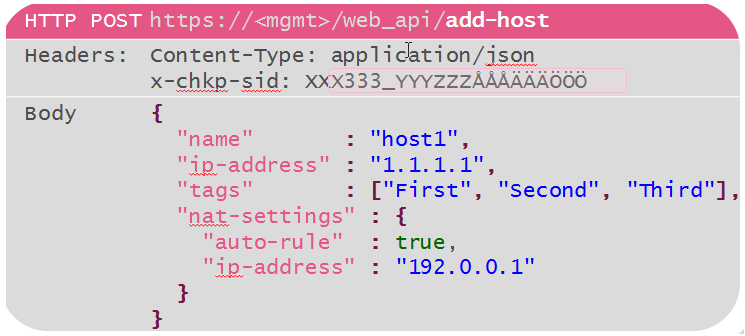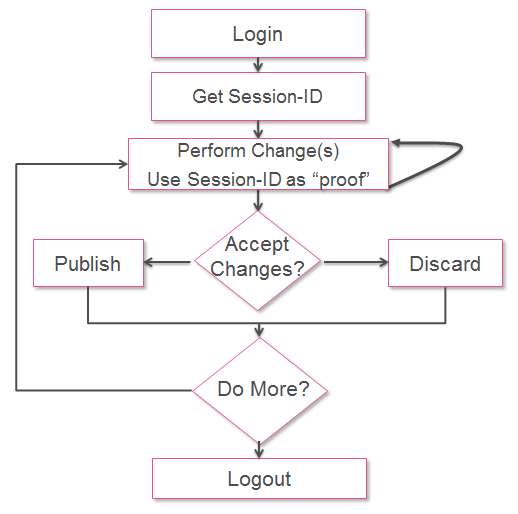- Products
Network & SASE IoT Protect Maestro Management OpenTelemetry/Skyline Remote Access VPN SASE SD-WAN Security Gateways SmartMove Smart-1 Cloud SMB Gateways (Spark) Threat PreventionCloud Cloud Network Security CloudMates General CloudGuard - WAF Talking Cloud Podcast Weekly ReportsSecurity Operations Events External Risk Management Incident Response Infinity AI Infinity Portal NDR Playblocks SOC XDR/XPR Threat Exposure Management
- Learn
- Local User Groups
- Partners
- More
This website uses Cookies. Click Accept to agree to our website's cookie use as described in our Privacy Policy. Click Preferences to customize your cookie settings.
- Products
- AI Security
- Developers & More
- Check Point Trivia
- CheckMates Toolbox
- General Topics
- Products Announcements
- Threat Prevention Blog
- Upcoming Events
- Americas
- EMEA
- Czech Republic and Slovakia
- Denmark
- Netherlands
- Germany
- Sweden
- United Kingdom and Ireland
- France
- Spain
- Norway
- Ukraine
- Baltics and Finland
- Greece
- Portugal
- Austria
- Kazakhstan and CIS
- Switzerland
- Romania
- Turkey
- Belarus
- Belgium & Luxembourg
- Russia
- Poland
- Georgia
- DACH - Germany, Austria and Switzerland
- Iberia
- Africa
- Adriatics Region
- Eastern Africa
- Israel
- Nordics
- Middle East and Africa
- Balkans
- Italy
- Bulgaria
- Cyprus
- APAC
CheckMates Fest 2026
Join the Celebration!
AI Security Masters
E1: How AI is Reshaping Our World
MVP 2026: Submissions
Are Now Open!
What's New in R82.10?
Watch NowOverlap in Security Validation
Help us to understand your needs better
CheckMates Go:
Maestro Madness
Turn on suggestions
Auto-suggest helps you quickly narrow down your search results by suggesting possible matches as you type.
Showing results for
- CheckMates
- :
- Products
- :
- Network & SASE
- :
- Management
- :
- Introduction to RESTful APIs and JSON format
Options
- Subscribe to RSS Feed
- Mark Topic as New
- Mark Topic as Read
- Float this Topic for Current User
- Bookmark
- Subscribe
- Mute
- Printer Friendly Page
Turn on suggestions
Auto-suggest helps you quickly narrow down your search results by suggesting possible matches as you type.
Showing results for
Are you a member of CheckMates?
×
Sign in with your Check Point UserCenter/PartnerMap account to access more great content and get a chance to win some Apple AirPods! If you don't have an account, create one now for free!
- Mark as New
- Bookmark
- Subscribe
- Mute
- Subscribe to RSS Feed
- Permalink
- Report Inappropriate Content
Introduction to RESTful APIs and JSON format
Representational State Transfer (REST) APIs
Web service APIs that follow the practices of the REST architectural constraints are called RESTful APIs. It is the mechanism that allows for systems to access, manipulate , delete , change and add resources on an application via web services. The Security Management API is a HTTP-based RESTful API.
In general HTTP-based RESTful APIs are defined as follows:
- Using standard HTTP methods (e.g., OPTIONS, GET, PUT, POST, and DELETE)
- Called via a base URL such as "https://<MGMT_SRV>/web_api/"
- An internet content type that tells the client how to format the requests in the body (payload) to the server
To keep int simple we are in the Check Point Security Management API only relying on the standard HTTP method called POST to send API calls. In the body (payload) we are using a JavaScript Object Notation (JSON) style format.

JavaScript Object Notation (JSON)
JSON is a textual representation defined by a small set of governing rules in witch data is structured, making it:
- Easy for humans to read and write.
- Easy for machines to parse and generate.
JSON specification states that data can be structured in either of the two following compositions
- A collection of name/value pairs, know as object
- An ordered list of values, known as array
Where name is just a string, value must be of type
- string, number, object, array, null or Boolean
- Boolean values are true or false
An object is represented as a pair of curly bracket, { and } surrounding zero or more name/value pairs
- A single colon : follows each name separating the name from the value
- The name/value pairs are separated by commas ,
- White-space can be inserted between any pair of tokens.
{ }
{"name" : "New Layer 1"}
{“user“ : “Jim", “password“ : “MyPwd“}
An array is represented as pair of square bracket , [ and ] surrounding zero or more values
- The order of the values are significant. Thus creating an ordered list of values
- The values are separated by commas ,
- White-space can be inserted between any pair of tokens.
[ ]
["First", "Second", "Third"]
- Arrays can be used as values in an object
{ "tags" : ["First", "Second", "Third"]}
Because objects and arrays can nest. Trees and other complex data structures can be represented

mgmt_cli executable converts CLI commands to HTTP-based RESTful API calls.
In addition to sending API calls formatted as HTTP-based POST requests using JSON format in the body (payload) via a web service. R&D have created an portable executable called mgmt_cli that runs on Windows and Linux. This executable translates the CLI commands issued toward the executable into HTTP-based RESTful API calls and sends them encrypted over HTTPS to the management server.
Using the mgmt_cli the above API call would look something like the following:
mgmt_cli add host name “host1” ip-address “1.1.1.1” tags.1 "First" tags.2 "Second" tags.3 "Third" nat-settings.auto-rule “true” nat-settings.ip-address "192.0.0.1"
mgmt_cli -r true -f json add host name "host1" ip-address "1.1.1.1" tags.1 "First" tags.2 "Second" tags.3 "Third" nat-settings.auto-rule "true" nat-settings.ip-address "192.0.0.1"As you can see an JSON object using the mgmt_cli is crated using name/value pairs. (For example name “host1”)
Wile a JSON array used as values in a object is created using name.1 "value" name.2 "value" name.3 "value". (For example tags.1 "First" tags.2 "Second" tags.3 "Third")
If you would like to add a tag into an array with existing tags you can in mgmt_cli type name.add "value" For example:
mgmt_cli -r true set host name host1 tags.add "Fourth"
Operational Flow of the Security Management API
The operational flow is exactly the same for the API as it is for the GUI Login > Get Session > Do changes > Publish > Logout

5 Replies
- Mark as New
- Bookmark
- Subscribe
- Mute
- Subscribe to RSS Feed
- Permalink
- Report Inappropriate Content
Sounds very nice ![]() !
!
CCSP - CCSE / CCTE / CTPS / CCME / CCSM Elite / SMB Specialist
- Mark as New
- Bookmark
- Subscribe
- Mute
- Subscribe to RSS Feed
- Permalink
- Report Inappropriate Content
Nice work, Jim.
This is a must doc for management API users.
Robert.
- Mark as New
- Bookmark
- Subscribe
- Mute
- Subscribe to RSS Feed
- Permalink
- Report Inappropriate Content
Excellent post for beginners and advanced users as well!
- Mark as New
- Bookmark
- Subscribe
- Mute
- Subscribe to RSS Feed
- Permalink
- Report Inappropriate Content
Thanks alot, great work
- Mark as New
- Bookmark
- Subscribe
- Mute
- Subscribe to RSS Feed
- Permalink
- Report Inappropriate Content
Greetings fellow APIans.... Does anyone know of a way to create objects via Tags using the RESTful API's?
Thank you in advance...
-Diego
Leaderboard
Epsum factorial non deposit quid pro quo hic escorol.
| User | Count |
|---|---|
| 22 | |
| 13 | |
| 13 | |
| 6 | |
| 5 | |
| 5 | |
| 5 | |
| 5 | |
| 4 | |
| 4 |
Upcoming Events
Thu 08 Jan 2026 @ 05:00 PM (CET)
AI Security Masters Session 1: How AI is Reshaping Our WorldThu 22 Jan 2026 @ 05:00 PM (CET)
AI Security Masters Session 2: Hacking with AI: The Dark Side of InnovationThu 12 Feb 2026 @ 05:00 PM (CET)
AI Security Masters Session 3: Exposing AI Vulnerabilities: CP<R> Latest Security FindingsThu 26 Feb 2026 @ 05:00 PM (CET)
AI Security Masters Session 4: Powering Prevention: The AI Driving Check Point’s ThreatCloudThu 08 Jan 2026 @ 05:00 PM (CET)
AI Security Masters Session 1: How AI is Reshaping Our WorldThu 22 Jan 2026 @ 05:00 PM (CET)
AI Security Masters Session 2: Hacking with AI: The Dark Side of InnovationThu 26 Feb 2026 @ 05:00 PM (CET)
AI Security Masters Session 4: Powering Prevention: The AI Driving Check Point’s ThreatCloudAbout CheckMates
Learn Check Point
Advanced Learning
YOU DESERVE THE BEST SECURITY
©1994-2025 Check Point Software Technologies Ltd. All rights reserved.
Copyright
Privacy Policy
About Us
UserCenter


